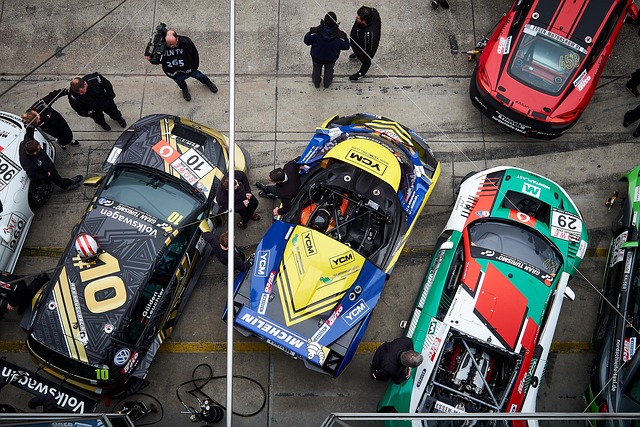Turn-based tactics aren’t glamorous. They don’t rely on twitch reflexes or flashy speed. But they reward something far more potent—patience, timing, and smart strategy. Every decision unfolds like a puzzle. Wait one turn too long, move one square too soon, and you pay for it.
The core edge here is out-thinking the game. Success doesn’t come from quick button taps, but from understanding your opponent and setting up traps three moves in advance. It’s chess, not dodgeball. That mental discipline adds layers of satisfaction, especially when your slow-burn plan works out exactly as intended.
For newcomers, this makes turn-based gameplay more accessible. It’s not about reaction time. It’s about learning systems, positioning, momentum. For veterans, it’s a skill-sharpening loop with infinite room to grow. Strategy wins here—plain and simple.
In strategy games, knowing your unit roles is step one. Tanks are your frontline—slow, tough, designed to soak up hits and drag focus. Support units keep everyone alive or charged up. They don’t rack up kills, but without them, your team crumples. Then there’s the glass cannons—units that hit hard but drop fast. Use them for high-value strikes, time them right, and never leave them exposed.
But having strong units isn’t enough. You’ve got to read the field. Understand how enemy AI moves. Most fight patterns follow cycles—aggression spikes, cooldown phases, positional resets. Learn these rhythms. Predict what’s coming. That’s how you position smarter and waste fewer moves.
The best squads aren’t just stacked with high-power units. They work because roles fit together. Shields go where damage is expected. Buffs hit before big bursts. And your heavy-hitters finish what the team sets up. Lean into synergy. Power without coordination gets steamrolled.
Cover Mechanics 101: High Ground, Line of Sight, Flanking
Good players shoot. Great players position. Understanding basic cover mechanics is what separates casuals from killers. First, take the high ground. It’s not just a Star Wars meme — elevation gives you wider visibility, tighter angles, and less area exposed to return fire. You see more, you risk less.
Line of sight is next. Always ask: what can I see, and who can see me? Use hard cover to cut angles. Peek smart. Learn the rhythm of popping in and out. A solid setup lets you control fights without overextending.
Now flanking — that’s where smart positioning becomes deadly. If you’re predictable, you’re toast. Circling wide, hitting from unexpected angles, or syncing pushes with teammates forces panic and bad decisions. Flanking turns a dug-in enemy into a confused one.
Terrain shapes your win conditions. Hills, alleys, rooftops, choke points — all of it matters. Dominate key areas, and you don’t just win gunfights, you bend the flow of the entire match.
Finally, defense isn’t just turtling up. It’s baiting. Show just enough to make the enemy commit, then shut them down with a crossfire or trap. The goal isn’t to hide — it’s to lure. Make them come to you. Then make them pay.
Action Economy and Tactical Combat Choices
Winning fights in a strategic combat system doesn’t always hinge on using every action point right away. Knowing when to hold back can be just as important as knowing when to go all in. Burning all your points early might leave you wide open next turn. Veterans read the flow of battle—save an action for defense, keep mobility in mind, and never forget to check cooldowns.
Chaining abilities is where pros make their mark. Set up a status effect that weakens armor, then follow up with high-damage attacks. Cripple movement, then zone control. It’s not flashy. It’s effective. Smart combos don’t just deal damage—they control the pace, turn momentum, and lock enemies into bad choices.
Then there’s the initiative and reaction systems. Go too slow, and you risk getting interrupted mid-attack. Frontload too much power without timing, and you might trigger an enemy counter. Learn the sequence, respect your windows. In the right hands, reaction turns become lethal ambushes instead of missed opportunities.
The key? Play smart, not flashy. Treat every turn like real estate. Know when to spend, when to wait, and when to force your opponent into a mistake.
Strategic Mastery: Outmaneuvering Opponents
Understanding your opponent’s goals is essential to winning before the fight even begins. High-level play isn’t only about reaction time; it’s about prediction, control, and making deliberate choices that force your enemy into unfavorable situations.
Anticipate Every Move
Top players read patterns. By recognizing consistent habits in timing, positioning, and preferred tactics, you can predict what your opponent plans to do next.
- Watch for repeated movement or ability usage
- Learn common setups used by specific characters or playstyles
- Time your responses to interrupt or counter those patterns
Anticipation allows you not just to survive, but to take control of the match tempo.
Sacrifice vs. Reward: Making Smart Trades
Not every exchange needs to end in a win—sometimes the smartest move is accepting a loss to gain future advantage.
- Trade minor losses for better stage position or tempo
- Condition your opponent to expect one move, then punish when they guess wrong
- Know when to give up a round to save resources for a stronger comeback
A tactical sacrifice can be far more valuable than a risky win.
Indirect Control: Traps, Pressure, and Zoning
Direct attacks aren’t the only path to dominance. Indirect control techniques create invisible pressure, forcing opponents into making errors.
- Traps: Set conditions that punish specific responses. Example: leave a gap that invites a jump, then punish it.
- Crowd Control: Use tools that limit enemy movement or control spacing, like projectiles or slow-zone effects.
- Zoning: Maintain distance to control where your opponent can safely operate. Push them toward the edge, then restrict their options further.
The goal is simple: limit their freedom without risking yours. Play smart, keep control, and let your opponent defeat themselves.
Staying two steps ahead starts with understanding the bigger picture behind every small move.
Before you tap confirm on your turn, check the basics: Did you spend your energy wisely? Is your defense covered for the next round? Are you setting up your next move or just reacting? Getting caught up in the moment leads to wasted actions and blown positioning. Take five seconds, breathe, and scan the whole field.
Once you’re in the thick of it, resource management can make or break you. Keep track of cooldowns, item uses, and teammate abilities. Don’t overextend yourself or blow your best options on low-stakes plays. Smart players always leave something in the tank for the next swing.
And when you mess up—and you will—don’t let the tilt take over. Everyone whiffs. Everyone misclicks. The difference is how you respond. Regroup fast, shift your plan, and salvage what you can. Keep a cool head and play the long game. A comeback starts with not spiraling.
Momentum in vlogging isn’t always about speed. In 2024, creators are learning to win by slowing things down strategically. Action-delay stacking is gaining ground—think carefully timed content drops, serialized narratives, and purposeful pacing that keeps viewers hooked without blowing through your best material too fast. It’s less hustle, more calculation.
Tempo manipulation matters too. Instead of uploading daily, some vloggers post less but design each video to punch harder. Turn-denial strategy, in this context, means fewer uploads with more packed impact—longer watch times, higher retention, more comments per post. Quality beats quantity, but only if you control the timing.
Finally, there’s power in breaking expectations. If your audience expects constant energy, drop a quiet, thoughtful vlog. If they expect slick editing, show a raw take. Playing against your usual rhythm can reset attention and keep your feed from getting stale. It’s not just content—it’s chess with a lens.
Every flawless victory starts with the basics: planning, positioning, and persistence. You can’t just drop into a new trend and hope to dominate. You need a strategy, an edge, and the grit to stick with it even when views dip or engagement stalls.
Iterate constantly. What worked last month might feel stale now. Question your setup, your upload cadence, your thumbnails, even your tone. Creators who stay curious stay relevant.
Looking to sharpen your skills beyond vlogging? Take a page from gaming strategy. Our Complete Beginner’s Guide to Mastering Battle Royale Games breaks down the mindset and tactics that apply across digital formats. Check it out here.





